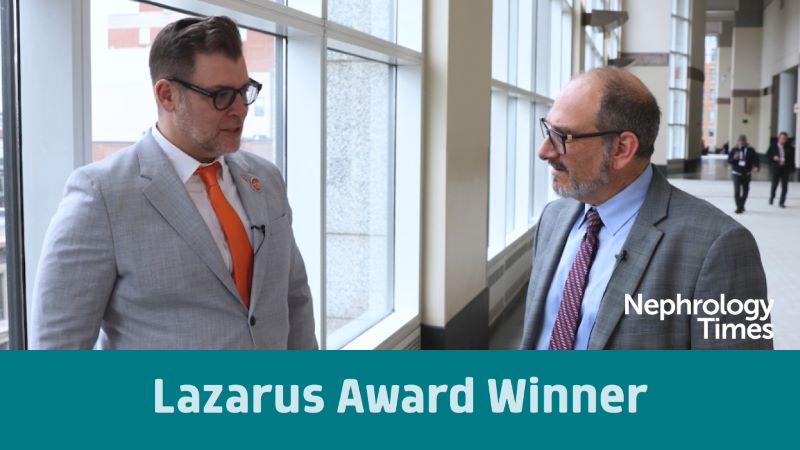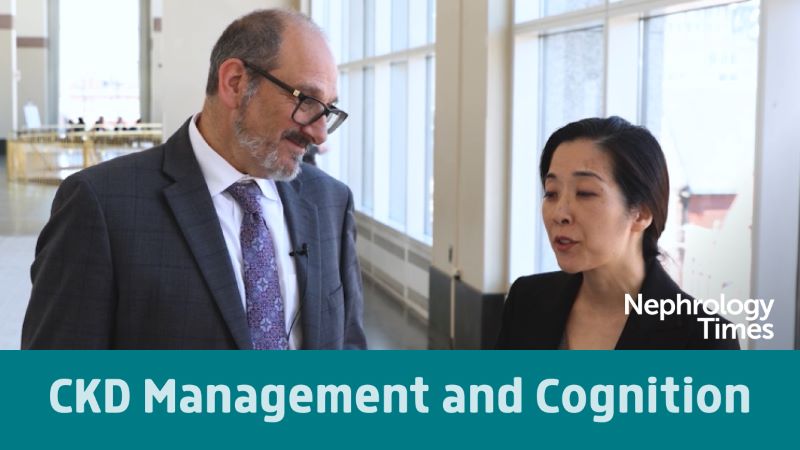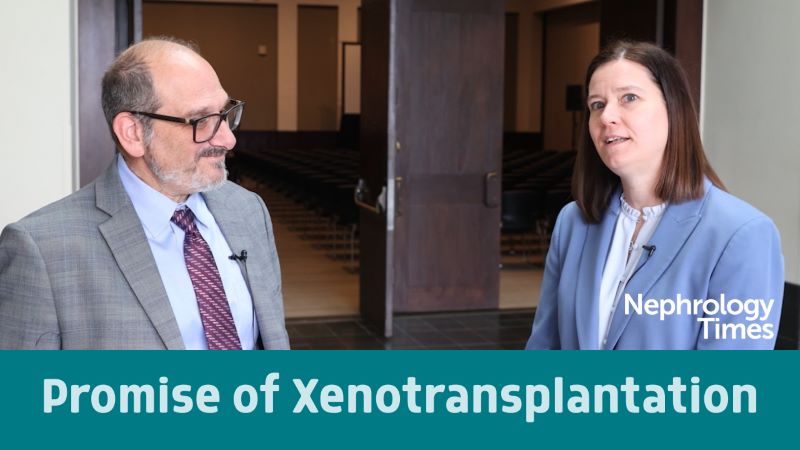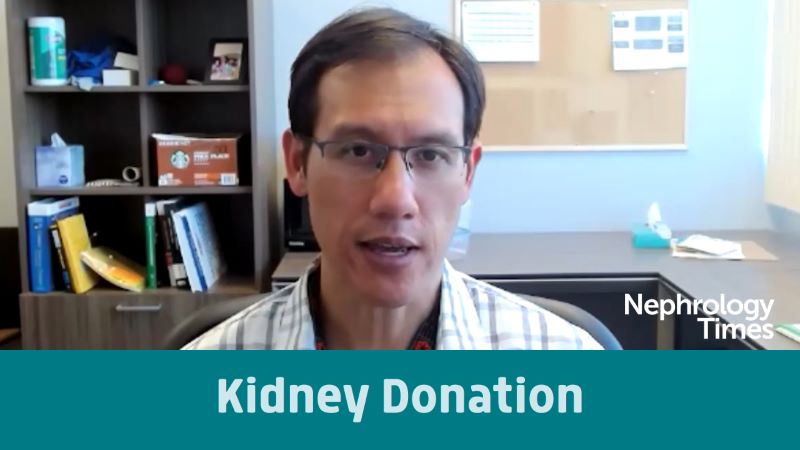Rob Etherington, President & CEO, Clene Nanomedicine, On Treating Neurodegenerative Diseases with Nano Therapeutics
By Rob Dillard - Last Updated: April 27, 2023DocWire News recently talked to Rob Etherington, CEO of Clene Nanomedicine, Inc., a company focused on revolutionizing the treatment of neurodegenerative disease with potential first-in-class nanotherapeutics. Mr. Etherington discussed the company’s lead drug candidate CNM-Au8, a catalytically active gold nanotherapeutic and the company’s recent clinical updates in Amyotrophic lateral sclerosis (ALS). See what Mr. Etherington had to say.
DocWire News: Can you provide us with some background on yourself, and the company, Clene Nanomedicine?
Rob Etherington: Sure. So Clene is a nano-therapeutic company that we found it eight years ago. There’s nothing quite like Clene anywhere else in the world. We’re the only company that actually builds nano-therapeutics with the singular premise that the nano-therapeutic is the drug. Our lead asset, CNM-Au8, is a gold nano crystal suspension. And we’re presently in development as the first energetic catalyst to remyelinate and to neuro-protect the patients, or rather the cells that… the assault, rather, I should more clearly say, that patients have that struggle with MS, Parkinson’s or ALS.
Talk to us about your lead drug asset.
So your neurons and mine are highly energetic demanding. In fact, our central nervous system uses about a quarter of the energy that you and I require every single day. And as we age, we are at tremendous risk of increased neurodegenerative disease. So if we take into account the assault the disease like Parkinson’s or multiple sclerosis or amyotrophic lateral sclerosis could engender on an aging body, then things start to go awry in a very devastating way.
And our lead asset, CNM-Au8, is a catalytically active nanocrystal. We are intersecting physics and biology to do something most unique, which is to improve the energy production that the brain requires to promote its own neuroprotection and its own remyelination. And if we’re right with this thesis, this is a significant opportunity. There’s many patients that struggle with ALS, many patients that struggle with MS, many patients that struggle with Parkinson’s. And our singular goal is to see if we can use this energetic catalyst effect in an oral drug that patients drink every morning to improve the energetic capacity of their central nervous system to fight back against the assault of these neurodegenerative diseases. And we have phase two data that we’ve just released in the last few months. We have ongoing phase two proof of concept studies. And critically important, we also have a phase three registration study in ALS underway, data of which comes out in July of next year.
Can you talk to us about the recent data that support the efficacy of this therapy?
So we released in the late fall, August and September, target engagement data that shows that our drug, taken by mouth orally, and I’m holding up an example of the medicine in my hand, can actually go across the blood-brain barrier into the brain of people who struggle with Parkinson’s and MS, and can improve their brain energy metabolism. In particular, we increase nicotinamide adenine dinucleotide, which is a core fundamental element of energy that your brain and mine relies upon to do its daily housekeeping. So we showed in August and September, with data, we released at key meetings in the Parkinson’s and MS space, that our drug crosses the blood-brain barrier and drives and improves energy metabolism. That then segued to the natural question, does that matter? And that was beginning to be answered in the RESCUE data that we released a month ago in… Well, actually earlier this month, at the top of November.
And the RESCUE data… Now let’s talk about this, because it’s critically important. So RESCUE is a study of early symptomatic amyotrophic lateral sclerosis patients who were on stable background therapy. And what we were attempting to understand is whether we could drive bioenergetic catalysis to slow disease progression in the ALS patients. Now, some of your viewers may have understood that we missed the primary top line endpoint. So for a very technical reason, we did not achieve statistical significance with the pioneering use of our MUNIX biomarker. So MUNIX basically is a motor unit. The way my brain talks to my fingers is right now, my brain is teaching my hand to contract my fingers. That is done through an electrical signal called a motor unit. And what we were looking at is whether or not we could improve the ability of the brain to talk to the muscles.
However, we did not reach primary endpoint statistical significance because of nearly a third of our patients had no involvement in our study with limbs. In other words, the type of ALS that they had did not cause compromise or problems in their hands, arms, and legs. So unfortunately, for a technical reason, we missed the primary endpoint. However, we saw a number of other things, which de-risked our phase three development presently underway. We saw that we had protection from significant ALS disease progression. Our statistical significance there was P less than 0.02. We saw that we had consistent evidence of a treatment effect in clinically relevant endpoints that the FDA relies upon, that is namely the ALS Functional Response Scale, or said more simply, how as an ALS patient, I might move and walk and talk and eat and chew and breathe, everything that you and I take for granted every day that gives us life, that gives us breath, literally. We had an impact in this at a statistically significant level of P less than 0.04.
We saw an improvement in the quality of life for the ALS patients at P less than 0.02. And probably most importantly is we saw a very interesting survival signal. Now, this still needs to be proven out in larger studies, but we saw preliminary evidence that there’s a survival benefit for patients that take CNM-Au8, our asset. We also found that the drug was remarkably well tolerated in this study with no safety concern. So on balance, we were pretty thrilled with this data.
What are the next steps and milestones for your lead asset?
We have underway a phase three study that is called HEALEY ALS Platform study. This is arguably the most important study ever attempted in neurodegenerative disease. It’s a multicenter randomized double-blind placebo controlled study that is being organized by the Healey Center at Harvard’s Mass General Hospital. And I say it’s the most important study perhaps ever done a neurodegenerative disease because it’s a platform study, which means that multiple drugs are in the same protocol with the same inclusion criteria, the same exclusion criteria. They’re sharing placebo. They have the same endpoints. And the goal here is to accelerate drug development in ALS, which as people who struggle with ALS will certainly tell all of us, is desperately needed. There has been progress in many other disease states, but not ALS over decades. And so the goal of the HEALEY ALS Platform study is to accelerate drug development.
That study is fully enrolled. We announced full enrollment as did the Harvard Mass General team at Healey two weeks ago. And we expect data to emerge from this study in the summer. Now, this is a phase two/phase three study, which means that if it’s successful and if Clene’s asset, CNM-Au8, reaches statistical significance, we have the opportunity to go down to the US FDA and to talk to them about the possibility of commercialization approval. Indeed, both the Harvard Mass General team and Clene has already been in conversation with the FDA about exactly this. So taken in concert with the data we just saw from RESCUE and the data we will yet see from HEALEY in the beginning of the second half of next year, Clene is hopeful that we could provide a drug to people that struggle with ALS every day that could possibly very positively affect their disease progression.
What are Clene’s other clinical programs in development?
Thank you for asking. Our other clinical development program is in Parkinson’s and MS. The Parkinson’s and MS target engagement data we showed in August teach us that in both Parkinson’s and MS patients, our drug was able to cross blood-brain barrier and drive this energetic target engagement. So in that spirit, we’re now preparing a Parkinson’s phase two study underway… to become underway in 2022, rather. And we already are nearly half enrolled with our multiple sclerosis study. We call that study the VISIONARY program, and the reason why we call it VISIONARY is simple. For about half of multiple sclerosis patients, they unfortunately struggle with optic neuritis. This is lesions that develop on their optic nerve, that of course controls their ability to see. Those multiple sclerotic lesions compromise their ability to see contrast vision. And the primary endpoint in our MS study is to see if we can return vision. In other words, improve the myelination of the optic nerve to improve visual pathway deficits that MS patients have.
We’ve presented already, including in October a month ago, data that suggests that since we’re using the visual system as a window into the patient’s brain, we can drive function improvement possibly. I say a possibly, because we are seeing significant clinical improvement across the study population over 48 weeks, in other words, effectively a year, at P value change from baseline of 0.0001. So the study is still unblinded. We will not unblind the data until in a few quarters, but certainly we are already seeing tremendously tantalizing results. Because you can recognize if we can improve neurological function in terms of visual improvement in MS patients on top of standard of care, that would be remarkably meaningful for the patients who struggle with… MS, rather, every day.
Any closing thoughts?
Thank you for the time to talk to us. We’re very excited about what we’re doing here because Clene’s goal is to improve neurological function with a catalytically active nanosuspension. And if we can succeed in this quest, we will be the first company to do so. But more importantly, for the people who struggle with these neurodegenerative diseases every single day, if we can improve neurological function, it would be a great win for the patients, and it would be our blessing and privilege to help them if it’s possible.







 © 2025 Mashup Media, LLC, a Formedics Property. All Rights Reserved.
© 2025 Mashup Media, LLC, a Formedics Property. All Rights Reserved.